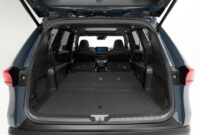Considering that the Euro NCAP definition includes the description ‘safety program’, it is logical that you would want to do your bit for ‘Vision Zero’. The initiative of the European Union that, by 2030, aims to prevent deaths and serious injuries that occur in traffic accidents. With that date on the calendar, the Euro NCAP will update the criteria of its tests forcing the brands to manufacture safer cars… and more expensive.
New cars coming onto the market they are increasingly connected and have countless driving assistants. In the future, we will even talk about autonomous vehicles. Euro NCAP cannot ignore this and has announced that its new tests will take into account “automated and assisted driver assistance systems, driving supervision technologies, V2X, the risks of thermal runaway and fire in electric cars and security in access to data vehicle”.
Brands and manufacturers will therefore face the challenge of creating safer and more connected cars. A development and manufacturing that has a cost, which ends up affecting the end user: the driver. The vehicles we buy in the future will offer us high safety standards, but in order to access them we will also be forced to make a greater economic investment.
Eight new criteria
To this end, Euro NCAP will improve the tests related to vulnerable users, introduce (gradually) a series of virtual tests and add incentives to achieve the desired five-star rating. In this sense, there will be a penalty/reward system for models that offer (or do not) assisted and automated driving technologies.
As far as testing is concerned, Euro NCAP plans to introduce eight new criteria to cover the four moments of an accident: driving safety, accident prevention (active safety), impact protection (passive safety) and post-impact safety.
- Evaluation of the technology that monitors the deterioration of driver fatigue and cognitive distraction
- Testing and evaluation of driver assistance systems, assisted and automated
- Requirements to further improve the real-world effectiveness of assistive technology speed
- Active security tests that will better simulate real road environments and examine human-machine interface (HMI) design to ensure driving assistants are more efficient
- Passive safety tests that pay more attention to the gender equality and population aging of drivers and occupants
- Test and evaluate the security features enabled by the communication between vehicles (V2V), between vehicles and infrastructure (V2I) and between vehicles and the environment (V2X)
- Evaluation of the risk of fire and thermal runaway in electric vehicles
- Promote best practices in vehicle safety and in data access vehicle
Passengers, motorcycles and commercial vehicles
The novelties not only focus on the arrival of these eight criteria. The Euro NCAP also will take into account the physiognomy of European passengers and drivers to improve safety on board. And, furthermore, it will not leave out two-wheeled vehicles (motorcycles and scooters) or heavy commercial vehicles: it is developing scenarios with specific tests for them.







